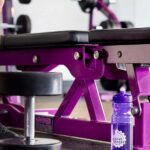A coaching program is made up of a series of exercises and their corresponding loads. A complete sports science has been developed to research patterns of coaching development based on sports, gender and athlete size (young males, adult men, veterans). The coach or the athlete will create a training program depending on the goal of the coaching, preparation interval, and options of the athlete and staff.
Quantity and depth of coaching are important load parameters. In this article we will examine why it is important to understand these parameters, how to use them correctly and analyze their effects.
Let’s first understand what these terms mean:
The quantity of training work can be defined as the amount of work that an athlete does over a certain period (a set, coached, week, or month). Weightlifting can be measured in terms of the number of training days, exercises, kilograms and hours. The most common and objective format to calculate quantity is by the number of reps.
Quantity indicators can be outlined as follows:
It’s a good idea to include all reps in the weights of the workouts if you do a great deal of lifting. Most athletes use working reps starting at 50%. Some high-level athletes depend on load starting at 70%.
Multiply the number of reps by the total weight (in kilograms).
Instance. The athlete in the exercise lifted 40 kg 3/4 (or 55 kg 2/3 or 65 kg 2/2), the amount of work, that is, the sum of the kilograms lifted, will be calculated as follows:Divide the number of reps of a separate train with the total number of reps, and multiply by 100%.
Instance. Example.The depth of coaching is a measure of pressure or quality. The common weight in the train is an indicator of depth.
The common weight can be calculated by dividing the total quantity by the number of reps.
Instance. The weight of the average rep will be 83 kg if the total quantity is 580 kg.580 kg / seven reps = 83kg
The relative depth can be calculated by multiplying the weight of the train by the best result within it, and then dividing that by 100%.
Instance. The average weight of the train is around 83 kg. The best result is 120 kg.83 kg/120 kg x 100% = 69 %
In weightlifting, depth zones are a vital indicator for evaluating objectively and visually how much work is being done. Six depth zones are most commonly used: 50-60%, 61-70%, 71-81%, 81-90%, and over 100%. All lifts are divided into zones when calculating a load for an exercise, a week or a month. This allows athletes to be judged objectively.
The ability to count the amount and intensity of work on a daily, weekly and monthly basis is crucial for the development and evaluation of an effective training program. It also allows the coach to make adjustments and adapt the program based on the athlete’s response and progress.
For a systematic and acutely aware coaching program, I think that you will need to write (in a pocket guide or use a smartphone application) and analyze your load.
My new coaching team TOROKHTIY gang presents weightlifting training sessions every day. TRAIN HEROIC, which provides automated statistics on coaching loads, can help you join in. Click the link to get started!
You might be passionate about:
Clear and Jerk Program
Clear Coaching Program
Snatch program
jerk program
Leg exercise program











